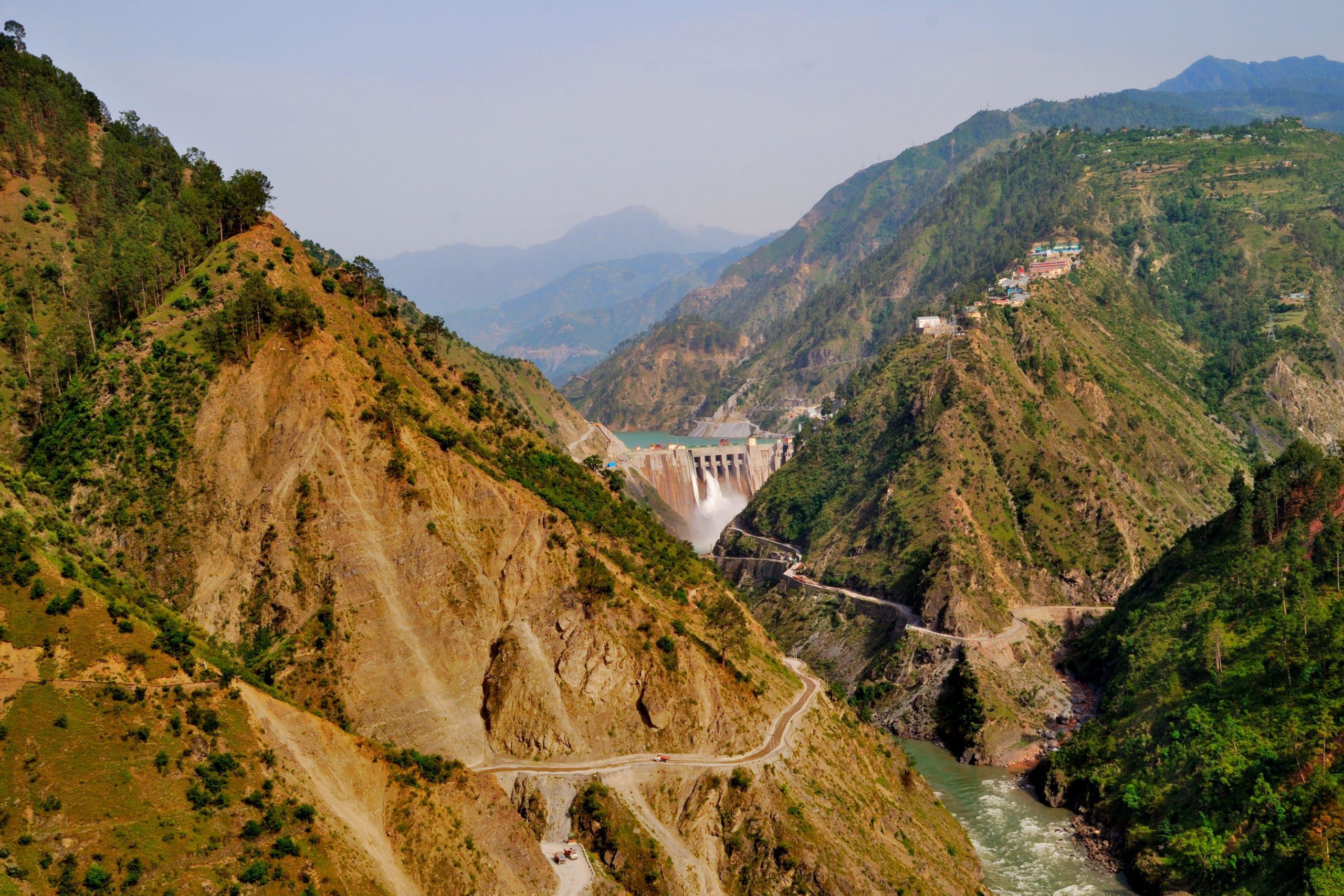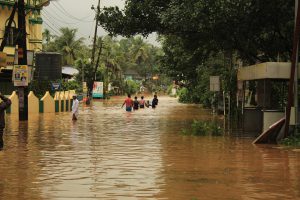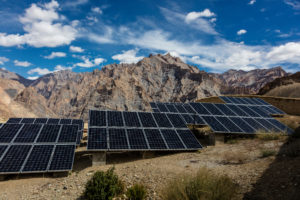Progress and prosperity in South Asia are under threat. The UN scientific body the Intergovernmental Panel on Climate Change (IPCC), which sets the gold standard for evidence of a changing climate, recently released the latest in a long list of studies drawing attention to the region’s climate chaos. Yet, over the past decade, regional collective action to address the crisis has steadily dwindled and, in many cases, come undone. Without South Asian cooperation many of the goals of climate action are beyond reach.
We have not seen a river treaty in over a quarter of a century; crucial shared resources, such as the air, underground water aquifers and biodiversity, remain largely ungoverned; constantly changing plans for a regional electricity trading mechanism, potentially crucial in the age of fickle renewables, have been sites of diplomatic bitterness. Moments for optimism, such as a SAARC Action Plan on Climate Change and a joint declaration by South Asian environment ministers in Dhaka in 2008 were quickly forgotten.
Established on 8 December 1985, the South Asian Association for Regional Cooperation (SAARC) brings together Afghanistan, Bangladesh, Bhutan, India, Maldives, Nepal, Pakistan and Sri Lanka. It sets out to promote the welfare of South Asian communities by accelerating economic growth and encouraging cooperation in the economic, social, cultural, technical and scientific fields. However, the last SAARC summit was held in 2014 and the organisation has not met since, due to tensions between the member countries.
This is unsurprising. The very idea of South Asia has been eroded by the unforgiving tides of recent geopolitics. China’s economic dominance and new alliances in the region have exacerbated tensions between neighbouring India, Pakistan, Bangladesh and Nepal. Institutions such as the South Asian Association for Regional Cooperation (SAARC) seem to be at the point of no return. It is ironic that, after decades of painstaking diplomatic work, we are left without an institutional safety net just as the climate crisis and other cross-border threats intensify.
The case for regional climate cooperation
The arbitrary nature of national borders makes climate change hard to manage. They are determined by politics and often completely neglect ecological boundaries and planetary systems. Today, impacts are felt across hard borders: melting glaciers are changing the hydrology of the entire Hindu Kush Himalayan region and its eight countries; erratic monsoons risk driving drought in some parts of India and devastating floods in others. The rigid borders of South Asia, so hastily defined in the middle of the last century, are unsuited to the problems of the 21st.
The case for regional climate cooperation in South Asia is straightforward: in many areas of mitigation and adaptation, more can be achieved together than alone. The bulk of climate action will undeniably have to happen at the national and sub-national scales, but regional cooperation offers novel opportunities for progress. For example, a regional electricity grid would allow India to sell renewable power to its neighbours while they help balance sudden falls in production. Proponents dream about solar power from Rajasthan traversing the subcontinent to power Dhaka at dusk. A regional grid must be the foundation for India’s grand plans of spearheading a global grid, recently announced at COP26 to great fanfare. Jointly planned river basins could focus on reviving trade through inland waterways, which could mean significantly less emissions than road transport if correctly regulated.
A united front at COP26
The climate talks are an opportunity to rebuild some momentum despite the region’s fraught politics. There are concrete reasons to believe that this is a good moment for regional climate diplomacy. First, nearly all South Asian heads of governments have, in the recent past, publicly expressed their climate anxieties and established a variety of climate policies as scientific evidence has grown more alarming. Regional policies could be part of this brew.
Second, climate finance commitments from developed countries and multilateral organisations are growing and could easily be channelled to projects that would benefit tens, if not hundreds of millions of South Asians. The region has a history of several large regional projects executed by capable intergovernmental and civil society institutions that have benefited South Asian cooperation, including the International Centre for Integrated Mountain Development (ICIMOD), the World Bank, the Asian Development Bank and the World Wide Fund for Nature (WWF) among others.
Third, regional leadership is an easy way for India to burnish its credentials as a climate leader. The Least Developed Countries climate bloc, of which Bangladesh and Nepal are a part, recently issued a strong pre-COP statement reflecting the pressures felt by the countries least prepared to deal with climate change. Large countries in the Global South could gain by foregrounding those fears in regional and bilateral agendas.
How to break the diplomacy deadlock
Given the rising stakes of inaction, any attempt at revival would have to learn from the past two decades of South Asian history. In the context of fraught geopolitics, small, practical advances could lay the foundations for long-term cooperation. As former Indian environment minister Jairam Ramesh noted at a recent event organised by The Third Pole, begin negotiations with small and meaningful steps while avoiding ‘conversation-stoppers’ at all costs. This strategy would, for example, put collaborative scientific programmes on Himalayan glaciers before updated river treaties.
The creative energies of states and provinces might also revitalise the South Asian project. India’s mountain states might, for example, benefit from exchanges with Nepal’s mountain provinces or Bhutan in matters of adaptation or scientific institution building. States sharing groundwater reservoirs might find it useful to speak to each other before national governments get involved. States in India’s east and northeast might be able to work out ways of creating small-scale, localised inland waterway trade that benefit border communities with neighbouring countries. National governments will always have the final say, but these conversations could shape bilateral negotiations in productive ways.
Funding the change for South Asian cooperation
However, several promising regional initiatives have quietly faded away because governments have been unable to sustain them. South Asian countries should consider setting up a small climate corpus, under a transparent and jointly managed institution, that funds promising initiatives in pre-agreed priority areas. This could be for anything from transmission lines for regional electricity trade to flood early-warning systems.
The 2010 Thimphu Declaration by SAARC heads of government called for a study to explore ways of providing capital for “projects that promote low-carbon technology and renewable energy”. This is a strong and legitimate foundation for such a fund, though it would be more useful if it covered both mitigation and adaptation given how much our understanding of South Asian vulnerability has grown since then.
Separating climate cooperation and geopolitics
Finally, the vitality of South Asian cooperation on climate will rest almost entirely on ministries and agencies in national governments. Foreign ministries, electricity agencies and water ministries among others must all be able to gauge where cooperation is beneficial and urgent. This is, in turn, contingent on their ability to understand the climate problem itself. A recent paper I co-authored notes that the institutional foundations for climate action in India are weak. Creative expressions of climate policy, of which the regional dimension is one, are unlikely to flourish in such contexts. The South Asian climate agenda hinges on the presence of robust climate capacities across governments.
For this to work, climate action must be de-securitised. This is being attempted elsewhere, notably between the US and China. It makes sense because South Asia is a subcontinent with ecological continuities; it is also a way of keeping the South Asian project alive. COP26 is an opportunity for South Asian leaders to make a start by reaffirming their commitment to the Thimphu Declaration, or some version of it. The climate crisis is always spoken of as a source of political fragmentation but, with pragmatic diplomacy, it could well rejuvenate an ailing political project.









